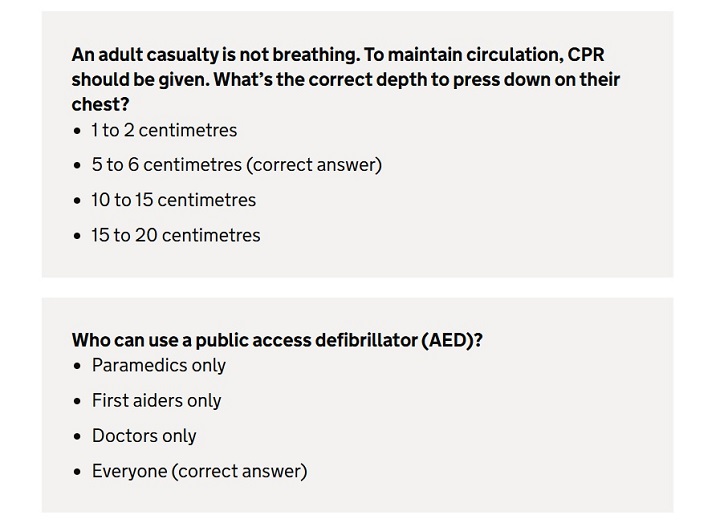
From 2026, driving theory tests will include new CPR questions and, for the first time, questions about defibrillators to boost cardiac arrest survival.
The move from the Driver and Vehicle Standards Agency (DVSA) aims to address the UK’s low cardiac arrest survival rates by making sure more people know how to respond in emergencies.
A cardiac arrest is when your heart suddenly stops pumping blood around your body. They can be caused by:
- dangerous heart rhythm disorders
- heart attack (this is when blood flow to part of the heart muscle is blocked, which can then trigger dangerous heart rhythms that stop the heart from pumping effectively)
- heart muscle and structural problems
- severe blood loss or oxygen shortage
- other factors, such as electrocution or drug overdoses
Signs and symptoms that suggest a person has gone into cardiac arrest include:
- they appear not to be breathing
- they’re not moving
- they do not respond to any stimulation, such as being touched or spoken to
DVSA says drivers are often first on the scene when someone suffers a cardiac arrest.
Data from Resuscitation Council UK shows more than 40,000 out-of-hospital cardiac arrests occur in the UK each year, but fewer than 10% people currently survive.
However, when CPR is given and an AED used within three to five minutes of collapse, survival rates can reach 70%.
Every minute without CPR and defibrillation reduces the chance of survival by up to 10%, making immediate bystander intervention crucial while waiting for emergency services.
Common scenarios where drivers might need CPR skills include:
- road traffic incidents – collisions may cause cardiac arrest from trauma or shock, while drivers having cardiac arrests can cause incidents
- roadside emergencies – drivers can encounter people who have collapsed at bus stops, service stations, or while walking along roads – these may include joggers suffering sudden cardiac arrest, elderly pedestrians experiencing cardiac arrest, or people with underlying heart conditions who collapse in public spaces
- service area incidents – at motorway services, petrol stations, and car parks, drivers often witness medical emergencies where their intervention could save lives before professional help arrives
From autumn 2025, car and motorcycle theory test candidates will need to familiarise themselves with:
- CPR techniques including proper hand placement and compression rates
- how to use automated external defibrillators
The questions will be added to other theory test types later.
Mark Winn, DVSA chief driving examiner, said: “Part of being a safe and responsible driver is knowing what to do in an emergency – how to step in and make a real, life-saving difference.
“Learning CPR and how to use an AED is a very simple skill and adding this into the official learning resource is a great way for DVSA to support the drive to raise awareness.”
James Cant, chief executive officer of Resuscitation Council UK, said: “By embedding these life-saving skills into such a widely taken assessment, we can help ensure that more people gain the knowledge and confidence to act during a cardiac arrest.”
Comment on this story